7 Hottest Types of Wool Fabrics to Bring Warmth During Cold Days
Jump To:
Winter is here, which means layering up in woolens and knitwear of all kinds for those of us who live in colder climates. As the temperatures fall, staying warm is critical. It all starts with selecting the warmest yarn for your Christmas knitting projects. Knitwear has the benefit of keeping heat close to the body and warming us. The perfect choice in yarn can make your cardigans, scarves, caps, gloves, and quilts considerably warmer. Many weavers still use wool for everyday purposes. But these days, you also have the option of choosing your ideal material—light or heavy, natural or dyed, wool or hair—and knit to your heart’s content. Check out the types of fabrics.
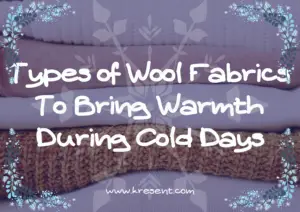
Lambswool
Lambswool is the wool got from the sheep’s first shearing, which occurs approximately seven months after the first coat emerges. It cannot exceed 50mm in length. It’s delicate and does not need to be processed much.
Because lambswool can come from any breed of sheep, the micron count varies a lot and isn’t frequently specified. We find lanolin in lambswool and all sheep’s wool. It’s often employed in the production of high-quality knitwear. Its fineness and softness distinguish the wool. It thickens and coarsens as the animal ages, at which point we classify it like sheep’s wool. The softest of the lamb’s hair is found in the undercoat.
From upholstery and carpets to apparel and accessories, we can utilize lambswool in a multitude of ways.
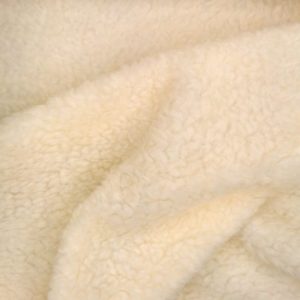
Merino
We derive merino wool from a breed of sheep Merino selected specifically for its wool. Average merino wool has a micron count of 21.5, fine merino has a micron count of 18.6-19.5, superfine has a micron count of 15-18.5, and ultrafine has a micron count of less than 15.
The strength or durability of merino wool is one of its most important characteristics. It’s also good at controlling body temperature, especially when worn against the skin, thanks to its high crimp count. They drive away moisture from the body, leaving the wearer warm but not overheated. The warmth-to-weight ratio of merino wool is outstanding.
Merino wool also includes lanolin, which has antimicrobial properties. Many manufacturers frequently use merino wool in high-end outdoor gear for all of these reasons. Merino wool is less expensive than cashmere.
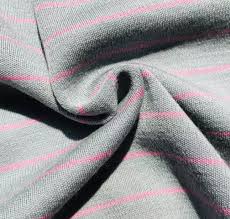
Cashmere
Cashmere and pashmina goats produce cashmere and pashmina wool. Kashmir, an area in Northern India that still produces cashmere, is the original spelling of cashmere.
Cashmere is a natural material that is prized for its luxurious softness and insulating characteristics. Its strands are extremely tiny and fragile, and they have a silky feel to them.
It is much warmer and lighter than sheep’s wool, and it resembles mohair, which is derived from angora goats. Because cashmere fibers are so tiny and delicate, we frequently combine them with other types of wool, such as merino, to give it more weight.
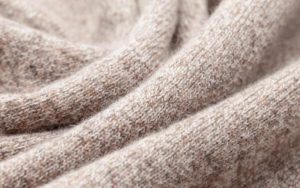
Angora
The fur of Angora rabbits is used to make Angora wool. The fiber has a slight, fine diameter and a halo-like effect of fur around each strand, giving Angora goods a lustrous appearance. This halo refers to the fluffiness of the yarn, so each strand in a finished object appears to have a coating of fluff surrounding it.
Angora, like cashmere or alpaca, is smooth and sumptuous, and it’s frequently combined with other types of wool to provide softness and its trademark halo.
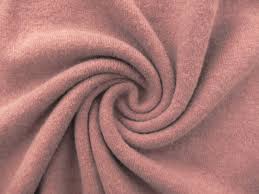
Alpaca
Alpaca wool is a type of wool made from alpaca fibres that develop naturally on animals. Alpacas are camelids, creatures that are closely related to camels, and they are native to South America. The Huacaya alpaca and the Suri alpaca are two different breeds of this four-legged creature. The wool produced by each of these alpaca breeds is expensive for a variety of reasons.
Alpaca wool can be heavy or light depending on how we spin it, making it suitable for a wide range of outfits. Alpaca wool is softer than sheep’s wool, and it is also much more durable.
- Wool manufactured from alpaca fibres is hypoallergenic because it contains no lanolin.
- Huacaya alpaca wool is spongy and naturally crimps, which is when the wool gets a wavy appearance as it is woven.Huacaya wool is more elastic because of this property, making it simpler to knit. The fibres used to manufacture this type of wool include microscopic air holes in them, which allow for better breathability. At the same time, these fibres are extremely insulating, with alpaca wool being one of the warmest animal fibres. Furthermore, this sort of wool is exceptionally water-resistant and difficult to burn.
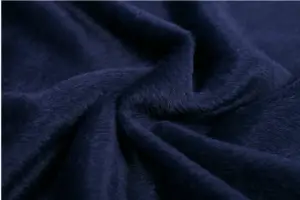
Quiviut
The musk ox wool qiviut is a brownish-grey-colored qiviut. It has a lustrous gloss similar to cashmere, but it is softer and has a better warmth-to-weight ratio. The qiviut has a staple length of 3.5-7 cm and a thickness of 12-14 microns.
When compared to sheep’s wool, it is eight times warmer, lighter, and less scratchy. Because there are no oils in the fiber, it is less allergenic, making it ideal for persons who are allergic to wool. Despite its low weight, the qiviut is a powerful weapon. It can endure agitation and temperature changes without shrinking, pilling, or felting.
Clothing made of qiviut is easy to care for and can endure for years with only a few hand washes. As they mature, they are becoming softer and more lovely.
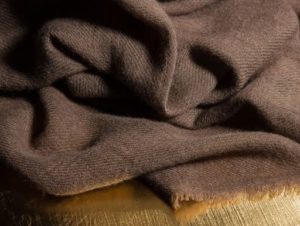
Yak fibre yarn
Yak fibre refers to yak fibre wool made from the coat hair of yaks, a long-haired bovine found mostly in the Himalayan region, Tibetan plateau, and parts of Mongolia and Central Asia. For over a thousand years, nomads in the Trans-Himalayan region have used yak fibre wool to produce garments, tents, ropes, and blankets.
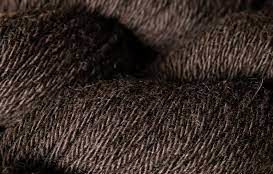
Recently, fabric has been employed in the garment sector to create high-end apparel and accessories. The finest wool is that which is closest to the body, and we use it for clothing. It is extremely durable and keeps you warm. It is also odor-resistant because it absorbs moisture quickly and releases it into the air.
So which yarn would you like to use for your knitting projects? Get the one you want today! Don’t forget to create a time-lapse video of your creation and post it on Instagram!
What are the 7 wool types?
Today we’ll help you understand the main types of wool, including: Merino wool. Lambswool. Shetland wool. Cashmere. Alpaca. Mohair.
Which wool is best?
Types of wool Lambswool. Like for the most types of wool, the best quality lamb wool is obtained from the first shearing of the sheep.
Merino wool. It’s considered to be the finest and softest sheep wool and it’s named after a sheep breed.
Then Cashmere, Mohair, Angora, Alpaca, Camel, Qiviut.
What type of wool is softest?
Merino wool Merino wool is the finest and softest sheep’s wool in the world. Merino wool makes up just 1% of the world’s fibre for apparel – true luxury.
What type of wool is warmest?
Angora wool Angora wool is exceptionally soft and possess the highest heat retention of any natural fiber (two-and-a-half times warmer than sheep’s wool). It also has the best moisture-wicking properties of any natural fiber.
What type of wool is itchy?
Merino wool has an excellent fiber length. When the fibers are shorter, or if wool has a wider fiber length, it will cause an itchy feeling. The fibers will rub against the skin becoming bothersome.
What is the most expensive wool?
Vicuña wool Vicuña wool is the finest and rarest wool in the world. It comes from the vicuña, a small llama-like animal native to the Andes Mountains in Peru.
What is Shetland wool?
Shetland wool is the fibre taken from the coats of Shetland sheep, a breed of sheep that live on the Shetland islands in Scotland. Shetland yarns are usually around 23 microns, making them heavier than merino—great for layering in very cold climates.
Which wool is most durable?
Often considered the most luxurious type of wool, cashmere is a fine fiber that is stronger, lighter, less itchy, and more durable than traditional sheep’s wool. It provides excellent insulation yet can be worn in the spring and you won’t overheat.
What are the three types of wool?
The Most Common Types of Wool
- Lambswool. Lambs used for lambswool. As with most wool and hair, the first shearing of sheep generally produces the finest and softest wool.
- Merino. Merino wool sheep.
- Cashmere. Cashmere goats.
- Mohair. Mohair sheep.
- Angora. Angora rabbit
- Alpaca. Alpaca.
What is pure new wool?
Pure wool comes from the fleece sheep naturally produce every year. Our blankets are woven from ‘pure new wool’ which means it is not blended with other fibres or recycled. Pure wool is graded by the quality of the fibre, rather than the breed of sheep, so can be blended from several different breeds.
